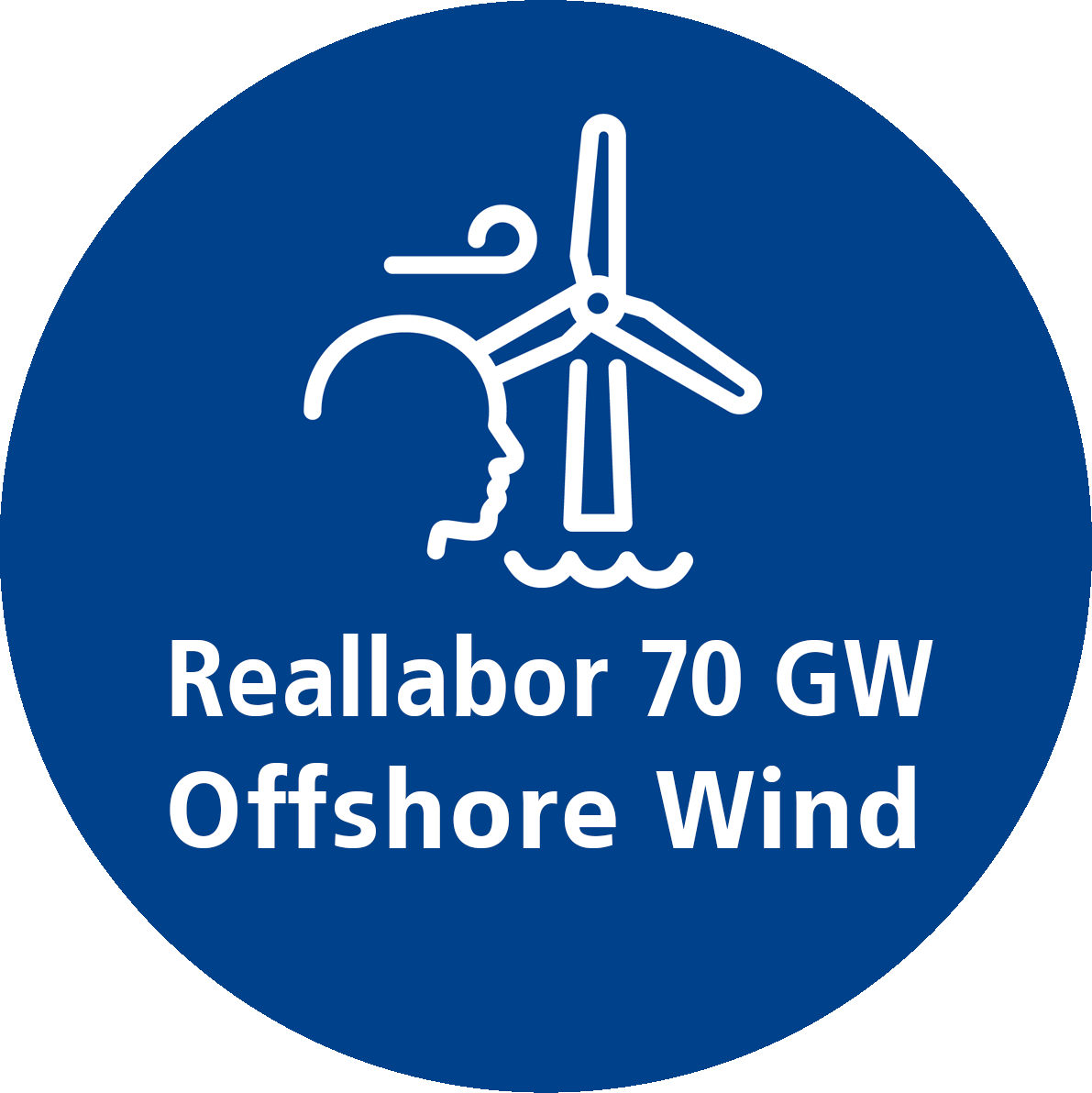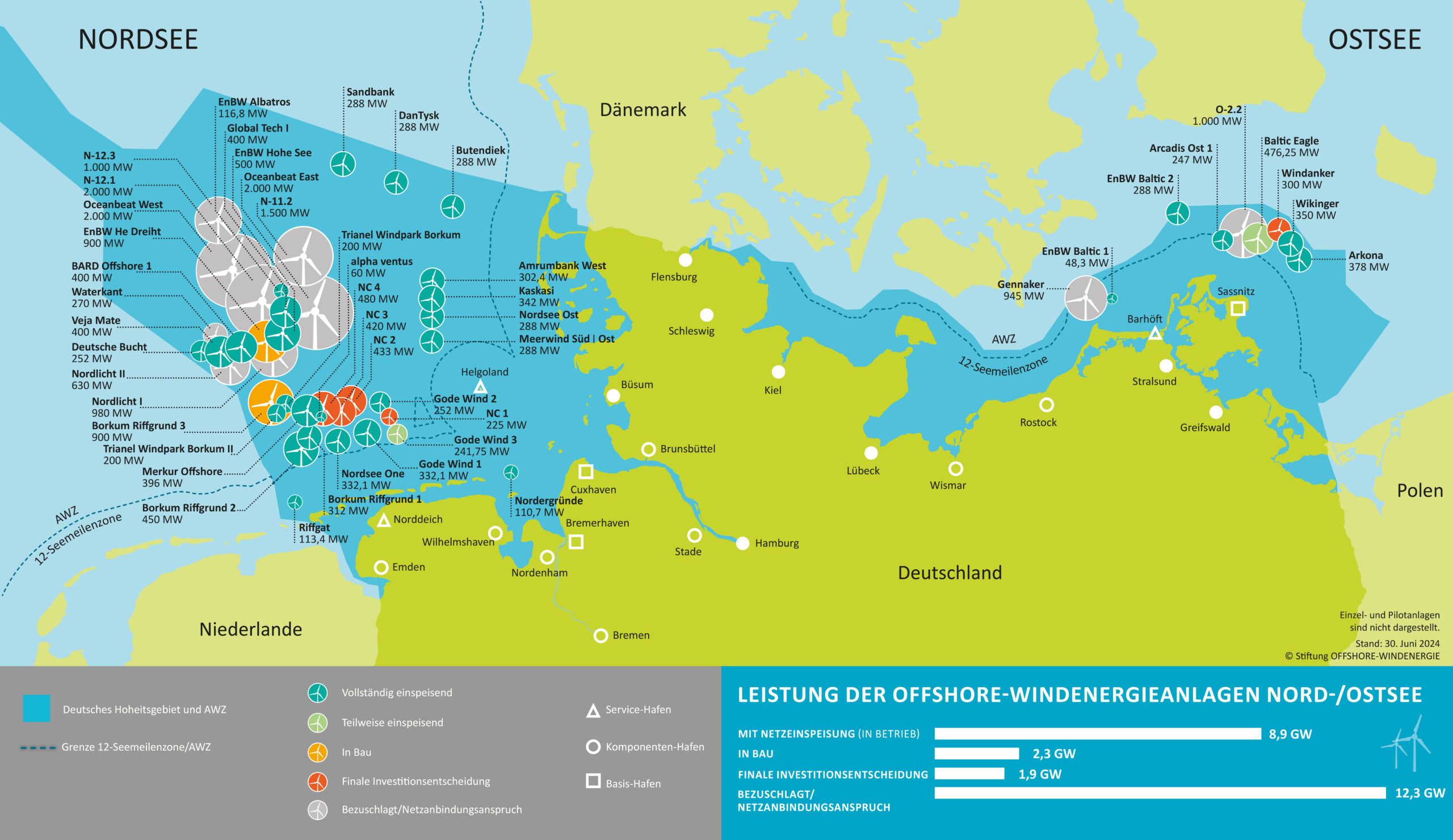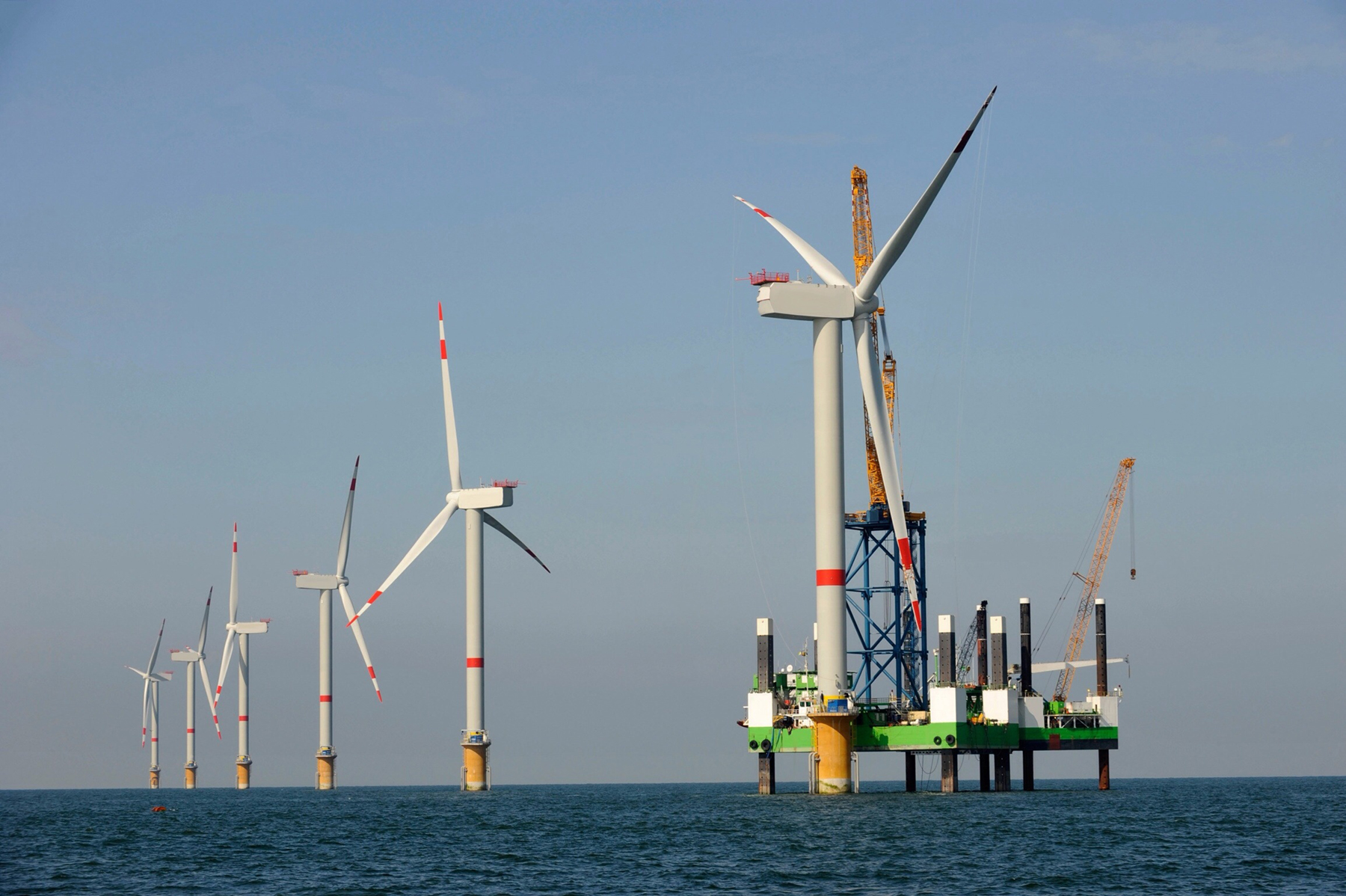
Development of offshore wind energy since 2010
Since the early 2000s, offshore wind energy in the German Bight has developed from the first pilot projects into a central element of renewable energy generation. Construction of the first offshore wind farms began around 2010, with test fields such as “alpha ventus” laying the foundations. Research on these early projects is still providing valuable insights into the construction and operation of wind turbines in the open sea.
Expansion of offshore wind energy
In the following years, the expansion was driven forward strongly: By 2020, the capacity of offshore wind power in the German Bight had grown to over 7 GW. Several large offshore wind farms, including “Bard Offshore 1”, “Nordsee One” and “Gode Wind”, were built and have been feeding green electricity into the German grid ever since. These projects were supported by government subsidies, technical innovations and improved framework conditions for grid expansion.
The North Sea as the future of Europe’s electricity supply
The expansion of offshore wind energy is an important project not only in the German Bight, but in the entire North Sea. Countries such as Denmark, the Netherlands, Belgium and the UK are constantly expanding their offshore wind capacities. Cooperation between the countries plays an important role in efficiently integrating the wind power generated into the European electricity markets.
European projects for a common energy future
In this context, cross-border projects such as the planned “energy islands”, in which central hubs serve as a collection point for wind power, which is then forwarded to several European countries, are becoming increasingly important. These shared infrastructures not only enable more efficient use of offshore wind resources, but also contribute to the stability of the European electricity grid. By balancing out fluctuations in electricity generation through cross-border distribution, they ensure a more consistent and reliable energy supply.
Technological developments
Technological development has gained enormous momentum since the start of offshore wind energy projects. Initially, turbines with an output of 3 to 5 MW were erected. Turbines with an output of over 10 MW are now standard, and prototypes with more than 15 MW are currently being tested.
These more powerful wind turbines make it possible to generate more electricity with fewer turbines, which significantly increases the efficiency of the wind farms. However, space is limited in the Exclusive Economic Zone (EEZ) of the German Bight, which leads to particularly dense turbine construction.
Wind farms and wind farm clusters
Due to the limited space available, the wind turbines within the wind farms have to be erected very close to each other, and the wind farm clusters are often planned close together. This high density poses particular challenges for planning and operation, as the interactions between the individual wind turbines increase. Turbulence and changes in wind flow caused by the neighboring turbines can impair efficiency and increase the loads on the rotor blades and structures.
Foundations and foundation structures
The foundations and construction methods for offshore wind turbines have developed considerably in recent years. While monopile foundations, i.e. individual steel piles driven into the seabed, dominated in the early days, larger and therefore heavier turbines and greater water depths are increasingly necessitating alternative foundation types such as jacket structures or suction bucket foundations.
Today, various foundation structures are installed in the German Bight. In the offshore wind real laboratory, many of the in-situ investigations are carried out on wind turbines with monopiles.
Technical innovations
Jackets consist of complex, lattice-like steel structures that allow for more stable anchoring of wind turbines in deeper waters. Jacket structures offer greater resistance to the demanding conditions of the North Sea and can also be used in difficult ground conditions.
Thanks to these technical innovations, wind farms in the German Bight can be designed to be more efficient and stable, which is particularly important for increasingly powerful turbines. At the same time, optimized construction methods are reducing the impact on the seabed, which makes an important contribution to the protection of marine ecosystems.
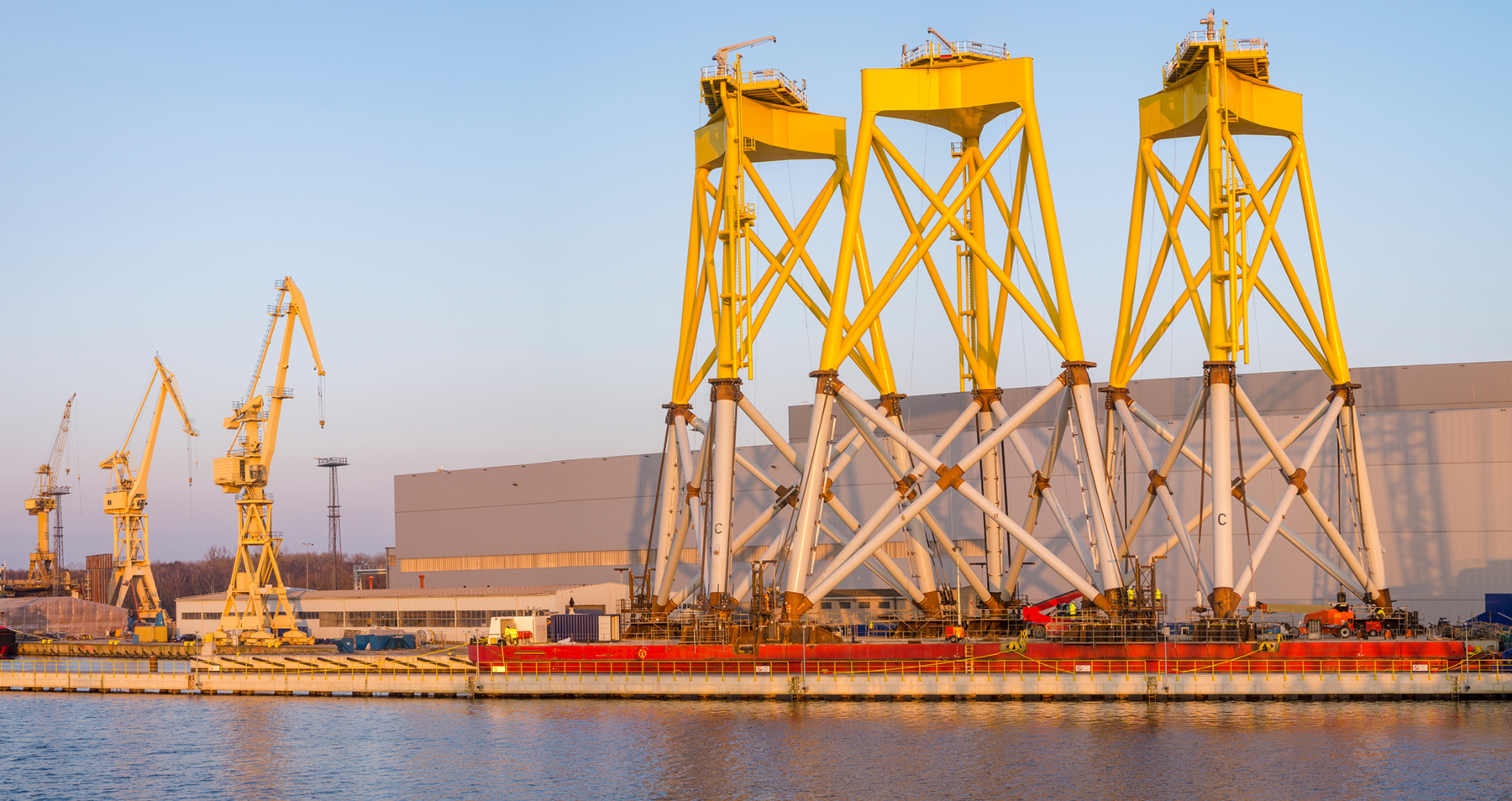

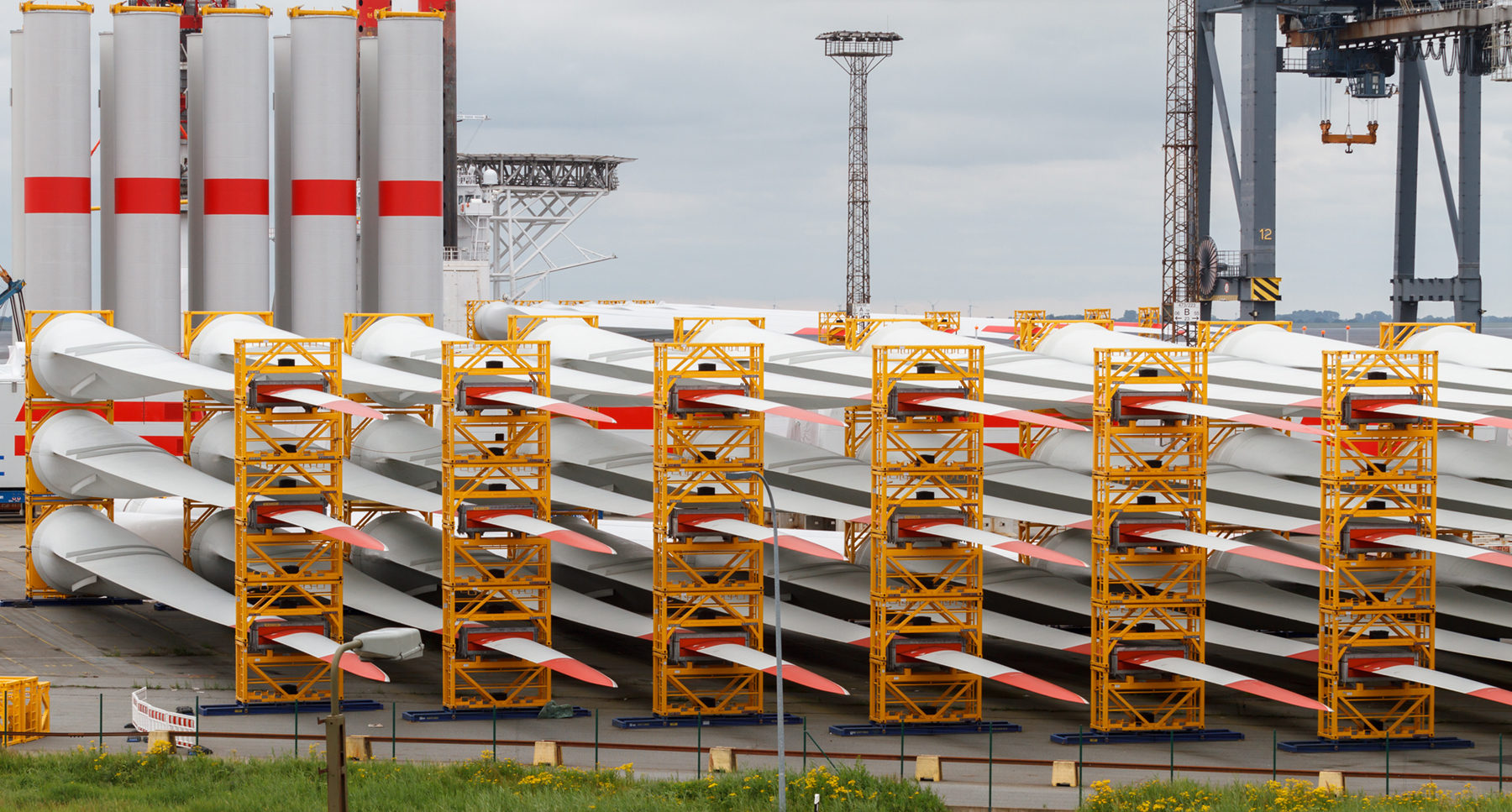
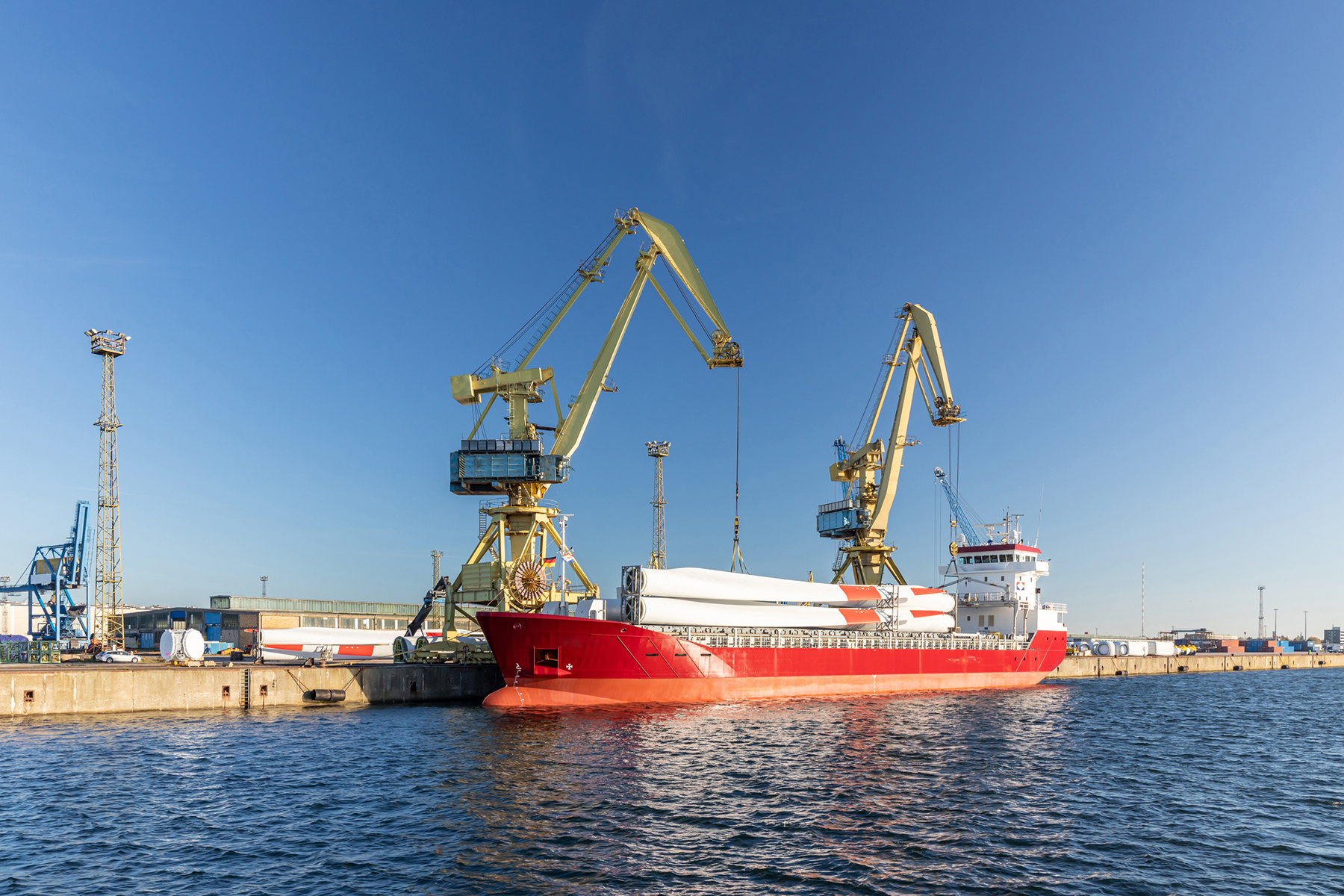
Integration of the coastal region
The integration of coastal regions is a crucial aspect in the expansion of offshore wind energy. The North Sea ports, such as Bremerhaven, Cuxhaven and Wilhelmshaven, are central logistics hubs for the construction, maintenance and operation of offshore wind farms. They provide the necessary infrastructure for the transportation and assembly of large components such as turbines, rotor blades and foundations. The complex logistics required for the construction of wind farms require close coordination between manufacturers, transport companies and port operators to ensure that the components are delivered and assembled on time. The coastal regions benefit not only from the increased economic activity, but also from new investments in port infrastructure, which increase their capacities and competitiveness in the long term.
Economic opportunities
In addition, the expansion of offshore wind energy offers considerable economic opportunities for structurally weak coastal regions. The creation of new jobs in production, maintenance and research in the offshore wind energy sector opens up new prospects for regional development. The establishment of specialized companies and research facilities near the ports strengthens the innovative power of the regions and supports the development of a sustainable value chain. Particularly in regions that are heavily dependent on tourism and have had few industrial alternatives to date, offshore wind energy offers an important opportunity to create long-term, high-quality jobs.
Future prospects
Another forward-looking element for coastal regions is the integration of hydrogen production into offshore wind energy. The energy generated by the wind farms can be used to produce green hydrogen in electrolysers close to the coast. This hydrogen production directly on the coasts has several advantages: it relieves the electricity grid by storing excess wind energy and contributes to the decarbonization of industrial processes in the region. Green hydrogen can be used both in industry and in the transport sector, thereby supporting the German government’s climate targets.
Wind energy and hydrogen
The prospect of hydrogen production could further increase the importance of coastal regions, as these locations are ideally suited for the installation of electrolysers due to their proximity to offshore wind farms and the existing port infrastructure. Projects such as the planned hydrogen hubs in Wilhelmshaven show that this development is already taking shape. In the future, these hubs could serve as hubs for the production, storage and transportation of green hydrogen and attract new industries to the region. This opens up another economic pillar for the coastal regions, which is closely linked to the energy transition and the sustainable use of offshore wind energy.
Federal government’s expansion targets for offshore wind energy
The German government has formulated ambitious targets for the further expansion of offshore wind energy in order to drive forward the energy transition and achieve the climate targets. Offshore wind capacity in Germany is to be expanded to at least 30 GW by 2030. The aim is even to increase this to 40 GW by 2040, and around 70 GW is planned in the long term by 2045. These capacities are essential in order to cover the growing demand for electricity from the electrification of industry, transport and heat supply and at the same time compensate for the coal phase-out.
Time perspective of the expansion
These expansion targets require a significant acceleration of construction projects and rapid implementation of planned wind farms. To this end, approval procedures must be shortened and optimized in order to reduce the lead time for new projects. At the same time, additional areas for offshore wind farms will be designated in the German Bight and other areas of the North Sea to ensure that the targets are achieved.
In the Exclusive Economic Zone (EEZ) of the German Bight, the expansion of offshore wind energy poses a challenge, as the limited areas are also earmarked for other uses such as fishing, shipping, military activities and nature conservation. The concept of co-use is becoming increasingly important in order to enable the efficient use of these maritime areas. The aim is to ensure that different activities can take place alongside each other and in harmony with environmental objectives.
Achievement paths and strategies for implementing the expansion targets
In order to achieve the Federal Government’s goals, various achievement paths and strategies are required:
Accelerated approval procedures
The introduction of simplified and digitalized approval processes is an important measure to accelerate the expansion of offshore wind power. This includes coordination between the various authorities and improving the legal framework in order to be able to react more quickly to changing conditions.
Expansion of network capacities
The expansion of offshore wind energy requires an increase in electricity grid capacities, both at sea and on land. This includes the construction of new grid connection systems and high-performance substations in coastal regions in order to reliably integrate wind power into the national grid and avoid bottlenecks.
International cooperations
Cooperation with neighboring countries in the North Sea such as the Netherlands and Denmark can help to make offshore expansion more efficient. Shared offshore power grids and “energy islands” could distribute the electricity generated across borders and increase security of supply.
Research and innovation
Technological progress plays a key role in further increasing the efficiency and service life of wind turbines. Innovations in design and maintenance technologies are particularly important in order to keep costs efficient and maximize the service life of the turbines.
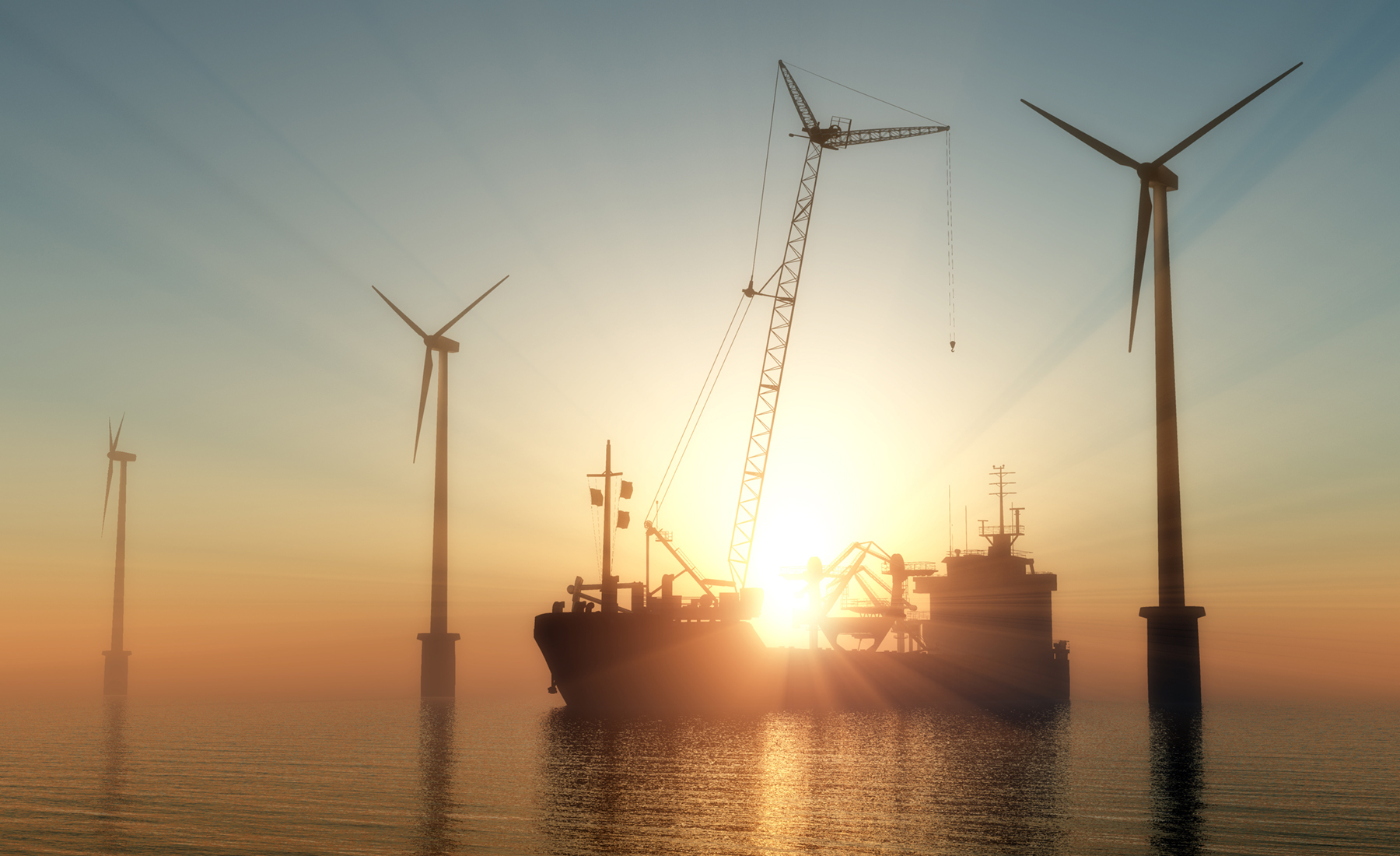
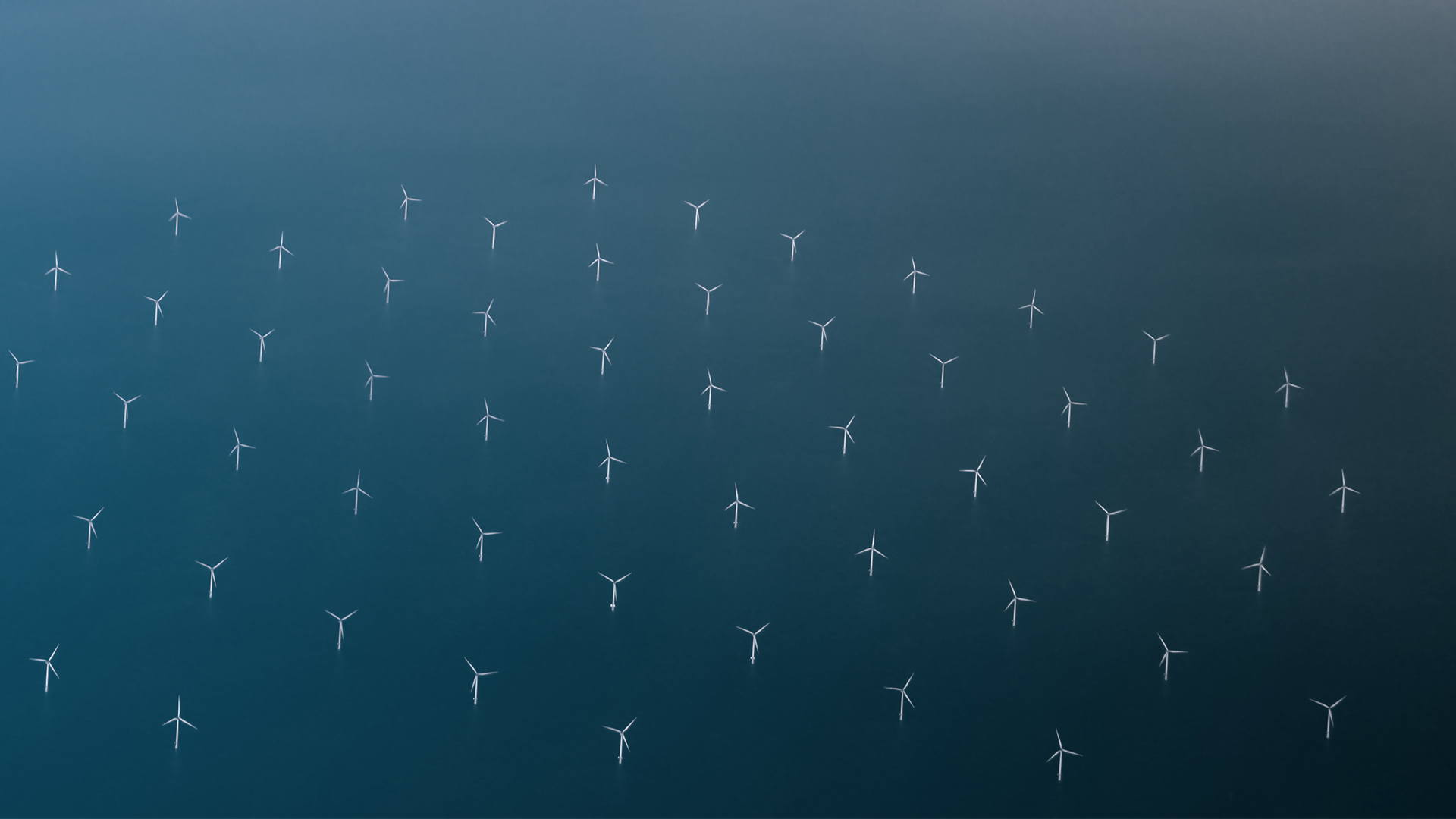
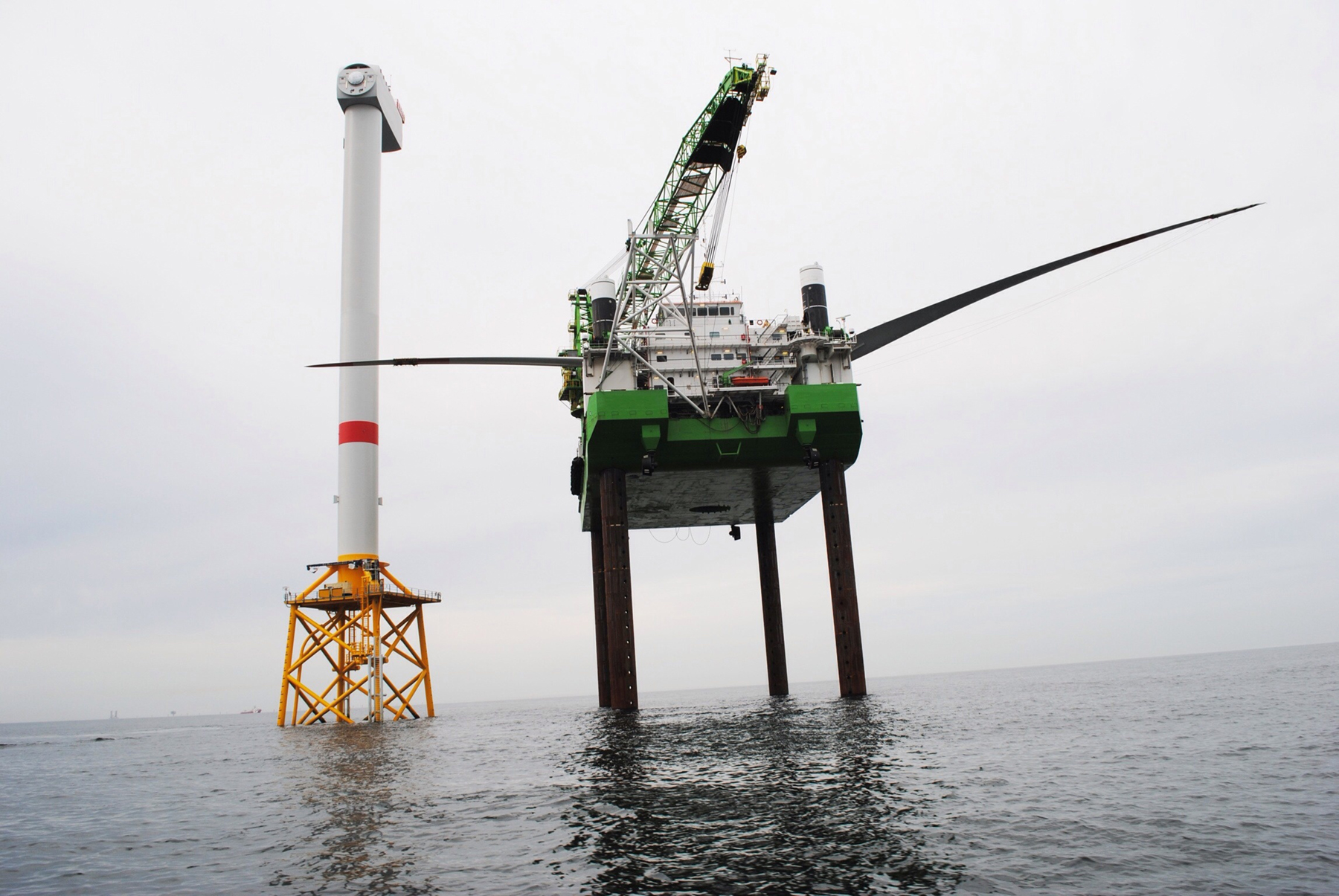
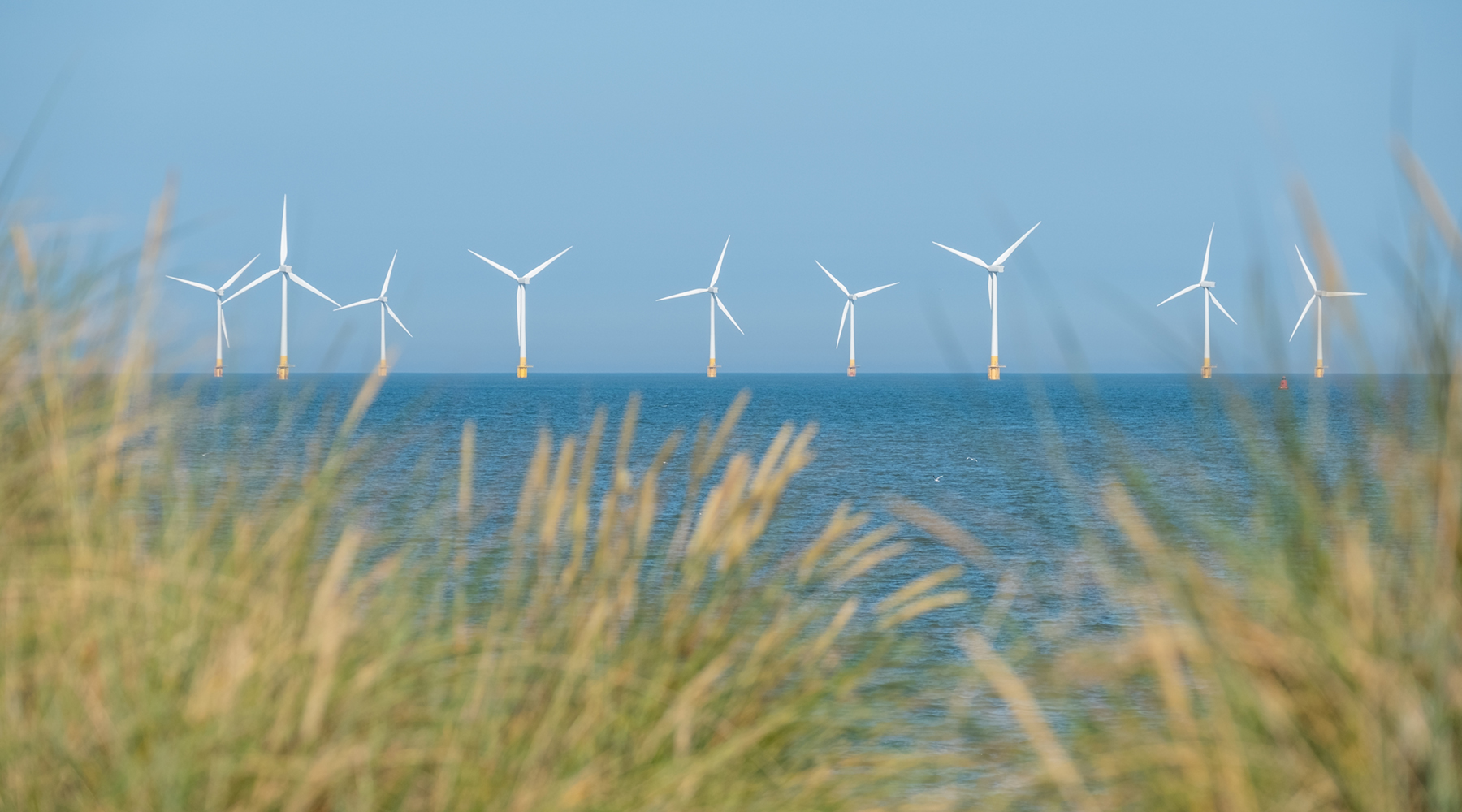
Challenges in the expansion of offshore wind energy
Although the federal government’s targets are ambitious, there are numerous challenges that could slow down the expansion of offshore wind energy in the German Bight:
Land conflicts and environmental compatibility
The expansion of offshore wind farms in the German Bight must be carried out in harmony with nature conservation. It is important to protect the habitat of marine animals and minimize potential adverse effects from the construction and operation of the turbines. This requires comprehensive environmental impact assessments and, if necessary, adjustments to the plans.
Supply chains
Global demand for wind power technology, particularly for large turbines and special ships for offshore construction, has risen sharply in recent years. Supply bottlenecks and rising costs for materials and transportation represent a potential obstacle to rapid expansion.
Skills shortage
The expansion of offshore wind energy requires specialized professionals in the fields of engineering, construction and maintenance. The lack of qualified workers could affect the speed of expansion, particularly in coastal regions that are dependent on the corresponding infrastructure.
Integration into the power grid
The increased feed-in of offshore wind power places high demands on the German electricity grid. Extensive investment in modernizing the electricity grid and in energy storage solutions is necessary in order to use the electricity generated efficiently and ensure security of supply.
Involvement of stakeholders and interdisciplinary research approaches in real-world laboratories
In order to make the expansion of offshore wind energy in the German Bight a success, it is crucial that the interests of all stakeholders involved, including local residents, the fishing industry and nature conservation associations, are taken into account appropriately. The dense development of wind farms and the increased industrial use of coastal regions can lead to conflicts of use that require careful planning and communication.
Transfer and interdisciplinarity
Only through close cooperation and transparent dialog can solutions be developed that do justice to the different interests and promote broad acceptance.
Stakeholder feedback is incorporated into the future questions and methods of the real-world laboratory and thus helps to develop relevant scenarios and problems.
The Living Lab relies on a comprehensive interdisciplinary research approach to tackle the many challenges involved in the expansion of offshore wind energy. In addition to technical and ecological research, the involvement of the social sciences plays a central role. These contribute valuable perspectives to better understand the interplay between technological development and social dynamics.
By linking natural sciences, engineering and social sciences, innovative solutions are developed that harmoniously integrate the further expansion of offshore wind energy into the future use of the EEZ. This holistic approach makes it possible to identify potential conflicts at an early stage and develop solutions that meet technical, economic, ecological and social requirements.
Solution approaches and research questions in the Living Lab
The research work in the Living Lab focuses on the following areas:
Efficient use of space and technical innovations
With the increasing size of wind turbines and higher output per area, as planned in parts of the North Sea, the demands on the construction also increase. The larger turbines are exposed to higher wind loads, which has an impact on rotor blades, support structures and foundations. Our project is developing new approaches to better adapt to these conditions and optimize the operation of individual turbines and entire wind farm clusters. The focus is on improving the efficiency and longevity of the turbines.
Sustainable maritime spatial planning
The installation of wind farms competes with other maritime uses such as shipping, fishing and nature conservation. So far, the interactions and co-utilization possibilities with other uses have been insufficiently considered. This is where our project comes in, integrating meteorological-oceanographic and economic models to enable sustainable planning of the maritime space. The aim is to minimize conflicts and promote synergies between offshore wind farms and other uses.
Integration of the coastal regions
The expansion of offshore wind energy offers structurally weak coastal regions a great opportunity for economic renewal. Until now, many of these regions have been heavily dependent on tourism, but wind energy can generate long-term added value. Our project promotes the development of the necessary infrastructure in ports and supports training and employment in the offshore wind energy sector. Through the targeted involvement of the local population and transparent communication, we want to create acceptance and reduce potential resistance to the expansion.
Optimization of logistics and network connection
The construction, operation and subsequent dismantling of offshore wind farms place high demands on logistics in coastal regions. Ports must be prepared for heavy goods traffic and the storage of large components. In addition, an efficient grid connection is required in order to reliably integrate the wind power generated into the power grid. Our project is developing innovative concepts for more efficient transportation and storage processes as well as solutions to improve the grid infrastructure in order to ensure the smooth connection and integration of wind power.
Technological research for a stable energy supply
Technical innovations are an as yet underutilized lever for the efficient expansion of offshore wind energy. These include new approaches to monitoring and maintaining turbines that can maximize uptime and reduce costs. Our project contributes to the development of such technologies that make wind farms more reliable and drive forward the energy transition.
